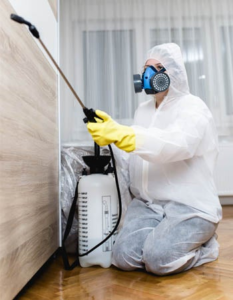Hair is a thread-like structure made of keratin, the same protein found in skin and nails. It grows from follicles in the scalp and is a key element of personal aesthetics.
Hair is elastic, and can stretch a lot before it breaks. It’s also a source of color, thanks to pigments called melanin. Learn More Here to know more.

Hair is a thread-like structure that grows from follicles in the skin, primarily on the scalp. It serves a variety of functions, including protecting the scalp from sunlight and helping regulate body temperature. It also plays a role in personal aesthetics and social identity. Hair is made of a protein called keratin, which is also found in nails and skin. It has a high tensile strength and can stretch far before breaking.
Each hair follicle has three layers: the cuticle, cortex, and medulla. The follicle is filled with oil made by the sebaceous (sih-BAY-shus) gland, which helps keep the hair and skin from getting too dry. Each strand of hair starts at the base of the follicle, which is fed by a blood vessel that runs underneath it. The strands gradually grow, die, and harden in a process called keratinization.
When hair is healthy and vibrant, it’s a source of beauty. It’s one of the first aspects that people notice about you, so it’s important to make sure your hair is always looking its best.
It’s a source of strength
Hair is made up of a protein called keratin, and also contains lipids, which give hair its strength and shine. It has a tensile strength equivalent to that of steel. Each strand of hair is covered by a protective layer, called the cuticle, which helps to protect it from damage. Hair is innervated by a network of nerves, including sensory afferents and autonomic nerves. This innervation is mainly responsible for the control of the arrector pili muscle, which causes hair to stand on end. This probably serves as a vestigial function, similar to the function of fur in other mammals for insulation and camouflage, or for intimidating rivals or would-be predators.
It’s a source of pride
For many LGBTQIA individuals, hair is a powerful symbol of self-expression and identity. It can mark milestones in their journey to self-acceptance, whether it’s a coming out process or the embracing of a new gender identity. It allows them to communicate their authentic selves confidently and freely. It also gives them the opportunity to challenge societal norms by expressing their masculinity or androgyny.
For some, such as Black students facing racial hair discrimination at their schools, their love for their hair can be the catalyst to take a stand against it. They feel empowered to break free from the damaging stereotypes that racial hair discrimination perpetuates, such as the perception that their curly hair is unprofessional and messy. In doing so, they become an active part in the New Civil Rights Movement.
It’s a source of self-expression
Hair is a powerful medium for self-expression, allowing individuals to showcase their personality and creativity. The colors, lengths, and styles of one’s hair can reflect an individual’s unique blend of experiences that shape their identity and culture. In addition, the hairstyles of people from diverse backgrounds serve as an example of the beauty and diversity of human heritage. However, societal norms and expectations often influence personal hair choices, causing some individuals to feel pressured to conform to beauty standards.
Despite these challenges, hair can be a source of empowerment and pride. In fact, many individuals find that a new hairstyle represents a fresh start or a milestone. It can also be a way to reclaim their sense of power after experiencing mental health challenges or feeling disempowered by social pressures. It is therefore important to remember that beauty standards should never stifle personal freedom or lead to feelings of self-doubt and insecurity. Rather, they should encourage individuals to express themselves boldly and confidently with their natural hair texture. This approach enables them to develop an appreciation for the beauty and authenticity of their natural hair journey.
Caramel Highlights
Caramel highlights are a beautiful way to give brown hair dimension and a sun-kissed appearance. This warm color option works well on a range of base colors, but it’s especially flattering when it’s applied using the balayage technique. The process involves strategically painting the hair in a natural-looking gradient that fades from a darker shade at your roots to lighter caramel highlights on top, like a sunset-inspired painter’s brushstrokes on a canvas. It’s a great alternative to foil highlights, which are more uniform and can start closer to your scalp.
A wavy texture pairs beautifully with caramel highlights, as seen on models and actresses including Hannah Davis, Cara Delevingne and Cleo Wade. The caramel tones look soft and luminous against their textured strands, bringing out the vibrancy of the curl pattern and making it seem naturally sunlit. The best part is that this shade requires very little maintenance. With a healthy, hydrating routine that includes weekly hair glosses (like the L’Oreal Paris Le Color Gloss One Step In-Shower Toning Gloss in Honey Blonde), your hair will stay vibrant and gorgeous for months to come.
To keep your caramel highlights looking fresh and flawless, ask your stylist to use the balayage method instead of foils. This allows them to place highlights in a more natural-looking way and will make the grow-out process much smoother and less time-consuming. Foils, on the other hand, involve wrapping sections of your hair in color or lightener to intensify the effect and will require more frequent touch-ups as they wear out.
Balayage is also a better choice for those who want to avoid bleaching their hair completely. Whether you have dark chestnut roots or light blonde strands, this technique will blend the two shades seamlessly without altering your natural tone too drastically. Foil highlights, on the other hand, tend to begin closer to your scalp and can make your blonde strands look patchy if they fade too quickly.
If you want to go even lighter, try a pumpkin spice color that combines warm caramel and strawberry blonde tones. According to Papanikolas, this hue is a safe alternative for brunettes who don’t feel comfortable going blonde since it’s not as brassy as traditional golden tones.
Smoky Violet
A moody spin on violet hair color, this grungier look flips the script with a lot more gray in the mix. Tabloff recommends a heavy balayage technique to achieve the cool grey and purple highlights seen in this sharply stacked bob. This pastel purple winner looks best on a dark base, and we recommend pairing it with an emerald-green smoky eye for total red carpet #goals.
If you love this shade but can’t quite commit to a full head of violet, opt for a lighter highlight. Bright orchid peek-a-boos give dimension to a light blonde shade, says Schaudt, and it’ll look especially pretty on straight or slightly wavy hair.
Natural Color
Natural Color, which aims to mimic the look of your own natural shade, is formulated without ammonia, parabens and SLS (sulfates), which can dry out and damage hair. Instead, the formula features a blend of 12 plant and fruit extracts that include aloe vera, avocado, argan, peach, orange and lemon. Those ingredients work together to moisturize and nourish strands, while encouraging new growth.
The result is a soft, warm tone that’s not overly brassy or harsh. But keep in mind that natural hues tend to require more upkeep than super vibrant shades, so make sure you use acidic glosses and toners to prevent oxidation and boost shine.
It’s also important to use a color-safe shampoo and conditioner, like this one from Leonor Greyl, to keep your locks protected and in top condition. And a silk pillowcase will reduce stress to your strands while you sleep (no more rubbing your color into your head!). For more styling tips based on your specific shade, check out this article. And if you’re still not sure what to do, consult a professional stylist for advice.








